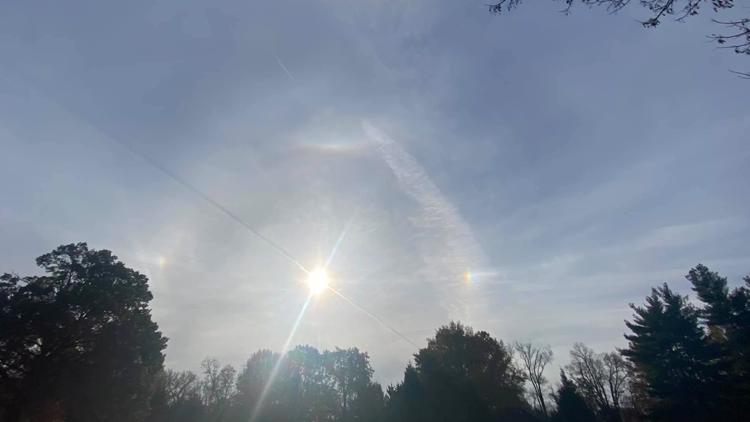LOUISVILLE, Ky. — Our weather has been quiet, but that doesn’t mean unique and interesting things can’t still happen. A WHAS11 viewer sent the First Alert Storm Team video of multiple halos in the Kentucky sky early Thursday afternoon. We all have seen halos around the sun, but how about four? Seeing more than one optical phenomena in the sky isn't uncommon but becomes increasingly rare as you count up.
In the video above we count at least four different optics: a 22° circular halo, sun dog, upper tangent, and circumzenithal. How do these come to be? In the sky, under the right conditions, water drops or ice crystals act as a prism. As light passes through the water or ice in high cirrus clouds, it is refracted or reflected and creates halos, sun dogs and other features.

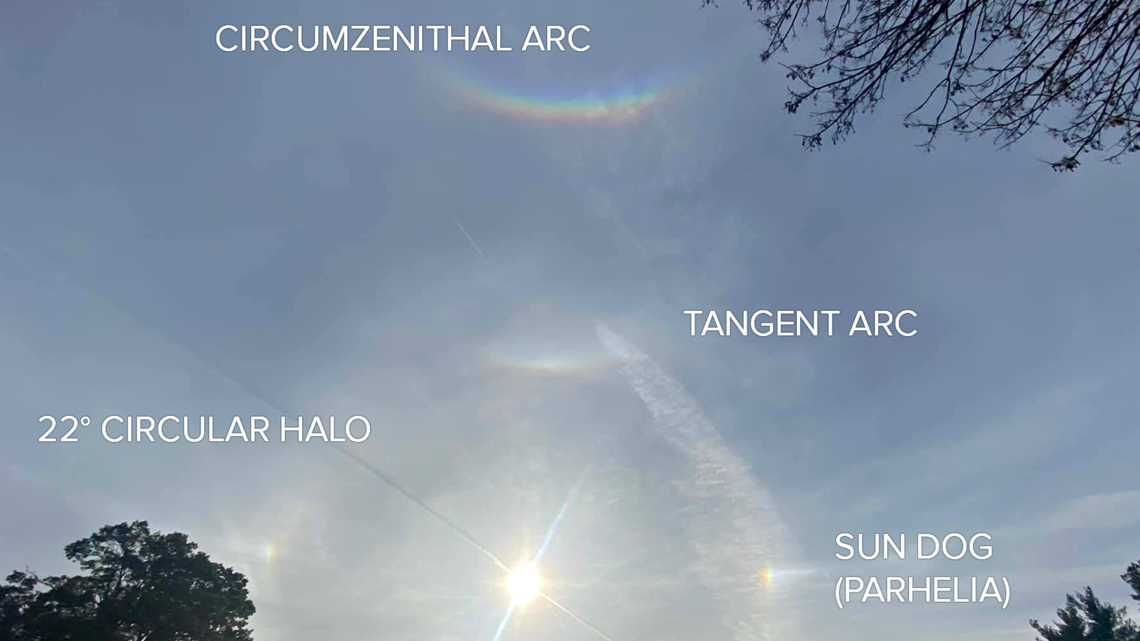
RELATED: What is a Sun Dog? | Weather Wise
22° circular halos
For all halos, high, thin cirrus clouds are needed to form these optical effects. 22° halos have the same diameter regardless of where it’s located in the sky. They form when light passes through hexagonal prism ice crystals that are randomly oriented. The light is refracted twice: once when it enters the crystal and again when it exits. These ice crystals are very small, generally under 20.5 micrometers. This is the most commonly seen halo and its name comes from the fact that its 22 degrees from the sun, meaning that sunlight is bent 22 degrees toward our eyes. The moon is also capable of sporting a 22° halo in the right conditions.

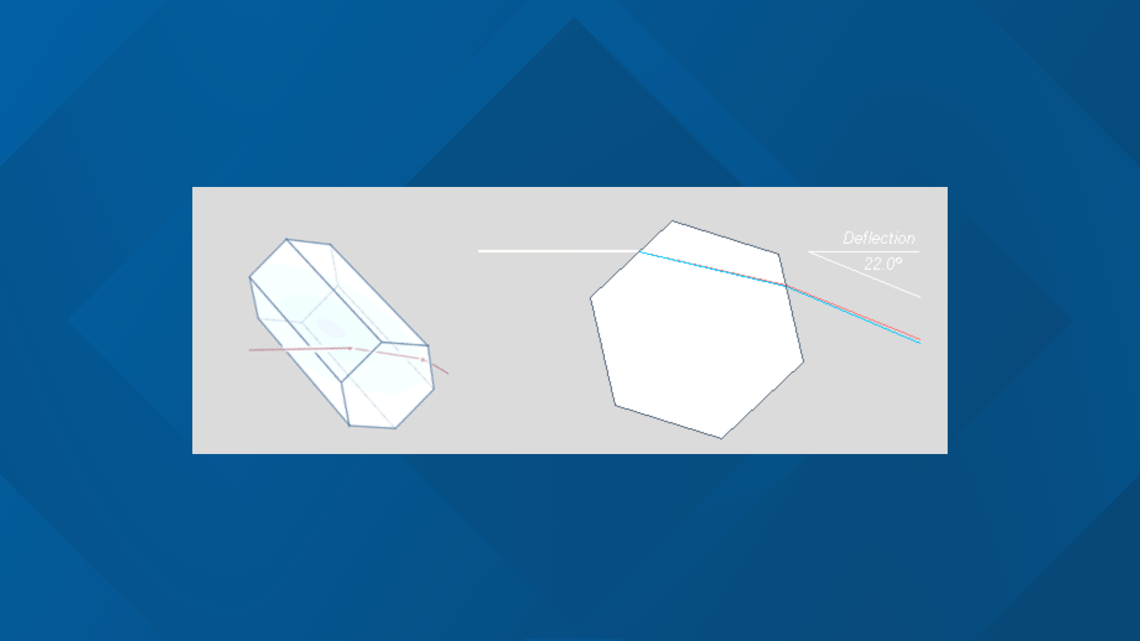

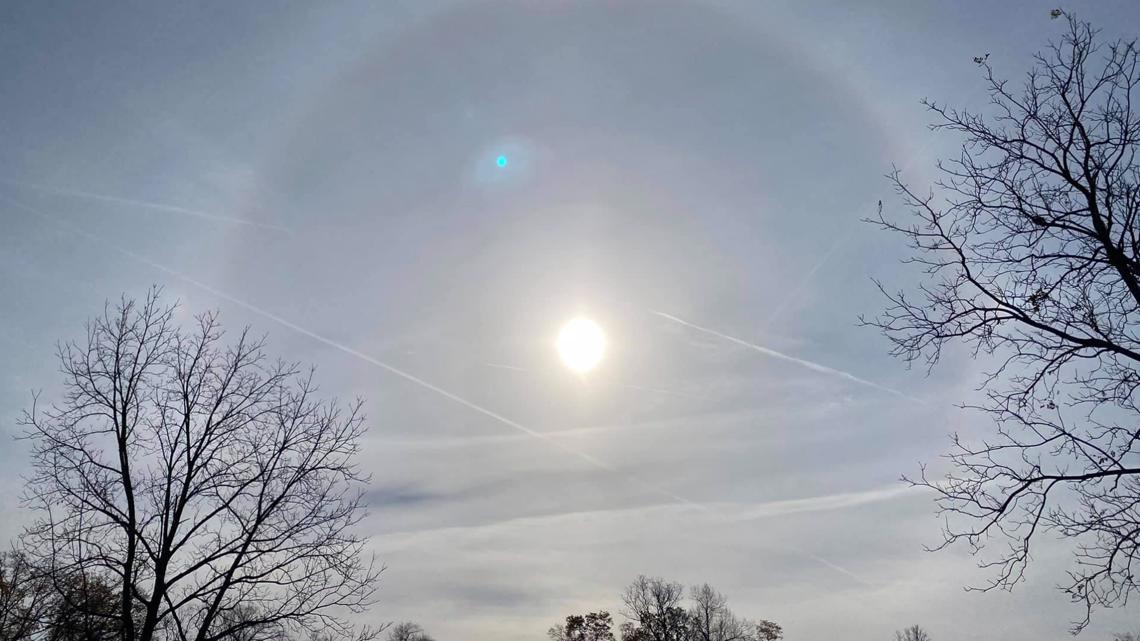
Sun dogs
Sun dogs are technically known as parhelia and are two bright spots seen on either side of the sun. Much like the 22° halo, sun dogs develop when light is refracted after entering a hexagonal ice crystal prism in the shape of a “plate”. The difference, however, is that these ice crystals are often larger - usually 30 micrometers or greater – and oriented differently with their broad flat sides parallel to the surface. Sun dogs are best seen when the sun is near the horizon and shines in roughly the same plane as the ice crystals. The light is also bent 22 degrees before it reaches our eyes.


Tangent arcs
Tangent arcs may not be viewed as often but can be quite spectacular when they do occur. Like the other phenomena mentioned, tangent arcs form when light enters a hexagonal prism ice crystal and is bent. A difference, however, is in the shape of the ice crystal as they take on more of a long column shape. The orientation for this ice crystal sees the long horizontal axis horizontal to the ground. Light enters this crystal through one side but exits through another before once again being bent 22° into our eyes. These are found directly above or below the main halo. A unique feature of tangent arcs is that their shape changes as the sun’s altitude changes; the higher the sun the broader the arc.
Circumzenithal arcs
Circumzenithal arcs (abbreviated as CZA) can be visible even if the other types mentioned in this blog are not. Some affectionally refer to them as upside down rainbows or “smiles in the sky” because they have the appearance of a grin. Cirrus clouds are again needed for these to form. When the sun is relatively low in the sky, look straight up (known as the zenith) to find it. These are particularly likely to be seen if sun dogs are present. Circumzenithal arcs are generally seen when the sun is between 5° and just over 32° in the sky. CZA form when sunlight enters an upward facing side of the hexagonal prism but exits through a vertical side. Depending on other atmospheric conditions, the colors of CZA can be very vibrant and easy to discern – more so than even that of a rainbow.



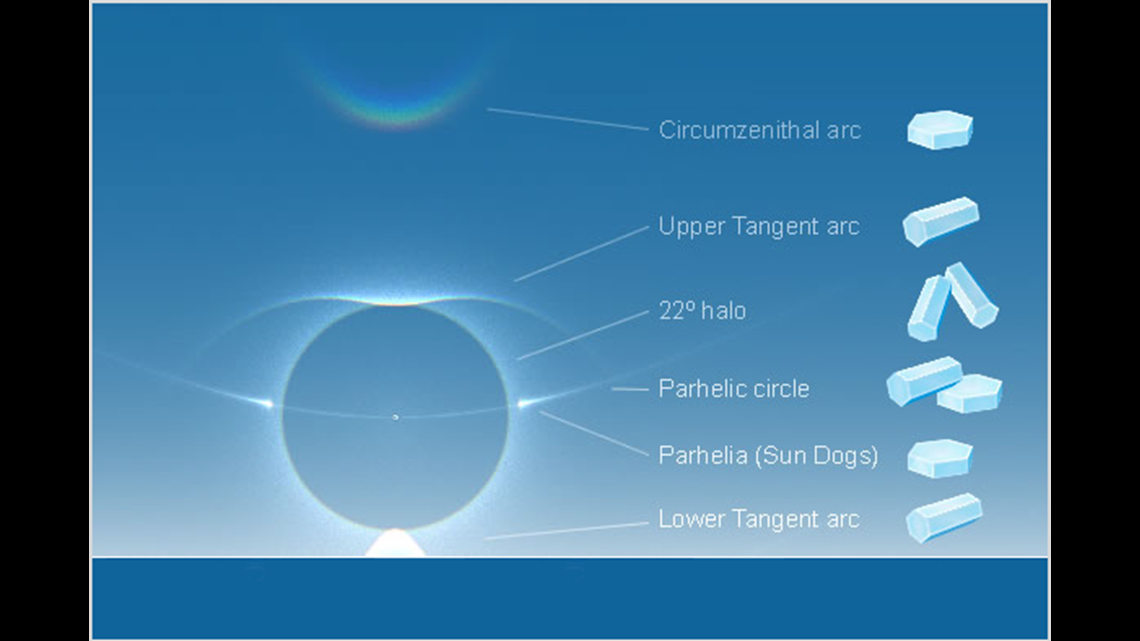
RELATED: What makes sun rays? | Weather Wise
But wait, there’s more
These are only some of the different types of atmospheric optics that can be seen because of sunlight and ice crystals. Circumhorizon, parhelic circles, and pyramidal arcs are some of the many that can be seen, but some are less common than others. It’s even possible to see multiple halos at once.

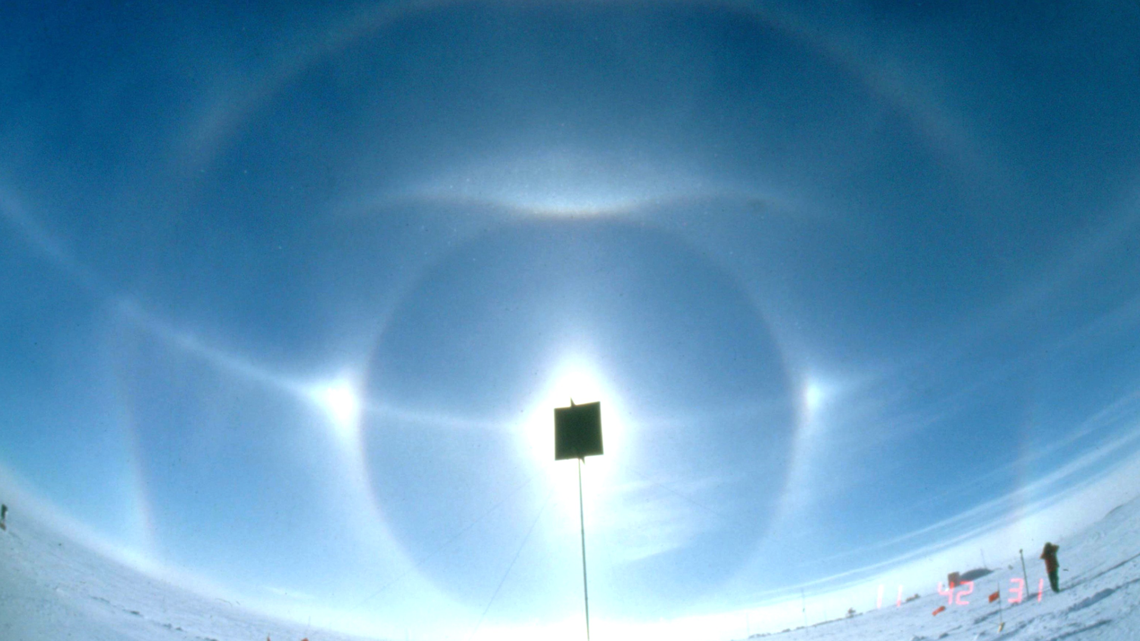
Meteorologist Alden German
Facebook: Facebook.com/AldenGermanWX | Twitter: @WXAlden


